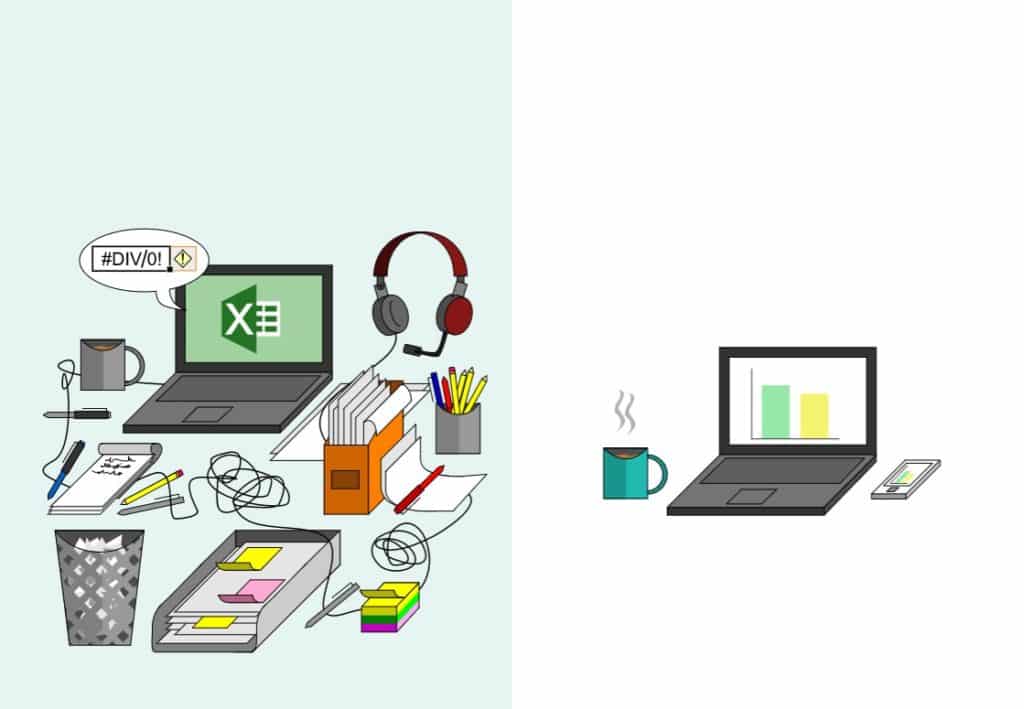If you do, you are wasting a whole lot of time on manual labour and reporting. I can also guess that you do very little monitoring and do not see it as a particularly pleasant task. Why so?
1. Excel, Word and paper notes
I think we can agree on the fact that most people do not enjoy using Excel. Many even hate it. In general, an organization will have 1–3 Excel experts that really love the programme, which leads to many reporting-related processes being tied to Excel. However, quality assurance should not be Excel-dependent! What if you had to do one of your organization’s most important tasks using a tool that you do not want to use? It would lead to starting an important task with a negative mindset. This, in turn, leads to an average of two or so evaluations per employee per month, which, in my opinion, is not even close to being enough, especially if you want to provide high-quality coaching to the employees and genuinely excellent experiences to the customers. A low number of evaluations also does not support the identification of add-on sales opportunities, which makes it difficult to add sales aspects to customer service.
“You will save 651 work hours a year. What could you spend that time doing?”
2. Time and its management.
Let’s assume that there are 100 customer service agents in your organization. The goal is to evaluate each person at least twice a month. On average, this takes 10 minutes per evaluation. In addition, time is spent on writing in Excel and Word files, entering them into the system, manually updating reports, sending evaluation results and so on. In the end, this process takes about 800 hours per year, without including the time it takes to give feedback. This costs 24,000 €. What if we removed archiving work and unnecessary messing around? Just by removing these, you can save 651 hours every year. Think of all the things you could do in that time. To sum all this up, monitoring, giving feedback and doing follow-ups takes a lot of time, which can easily lead to skipping these tasks completely.
3. Not following up on agreed improvement measures.
Once the monitoring is done, feedback discussions are completed and areas for improvement have been agreed, you still need to follow up on them. Maybe you even agreed on some concrete actions during the feedback conversation? What kind of a schedule did you set for these actions? Do your Excel files let you know when it is time to do follow-ups? Is there a risk that there will be no follow-up at all for the improvement measures? And what is the impression this gives on the supervisors and the organization..? I guess we can all agree that it does not look great. Does this encourage the employees to provide excellent service to the customers? Probably not. This is why it is important to stick to your promises and stay up to date on all follow-ups. Trust is always good, of course, but it is very important to monitor the progress of the agreed improvements and to discuss the monitoring results together with the person in question. Ideally, this gives you an opportunity to give the customer service agent a sense of achievement by recognizing his or her efforts once the improvements have been made.
QualityDesk offers an easy and affordable solution to your problems
We have created a software that allows you to get rid of all those papers and Excel files at once. So why not improve the efficiency of your operations in an affordable way and spend more time on ensuring your employees’ well-being and improving your company’s results? In addition, you will be able to have all your employees’ coaching and quality information in one place, without data security issues!
If you are interested, just book a 15-minute call with me! Let’s see how we can improve your customer service quality assurance process! I promise you that in a meeting, I can offer some new perspectives on developing your customer service and your time will not be wasted.




